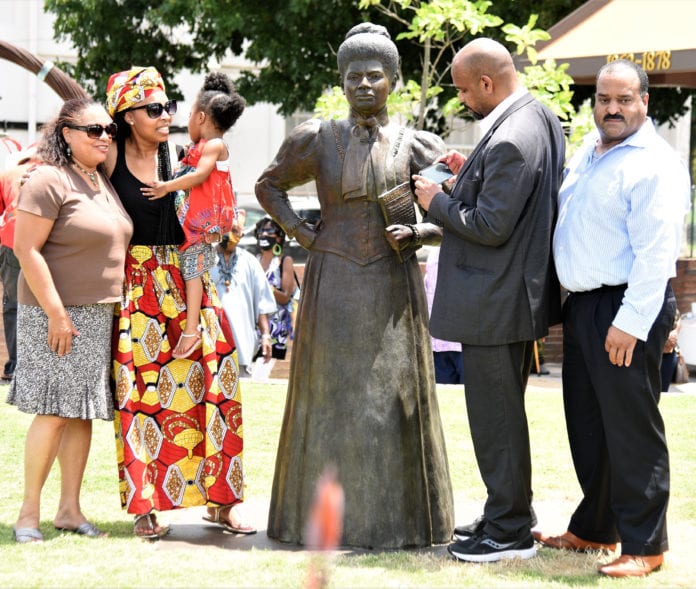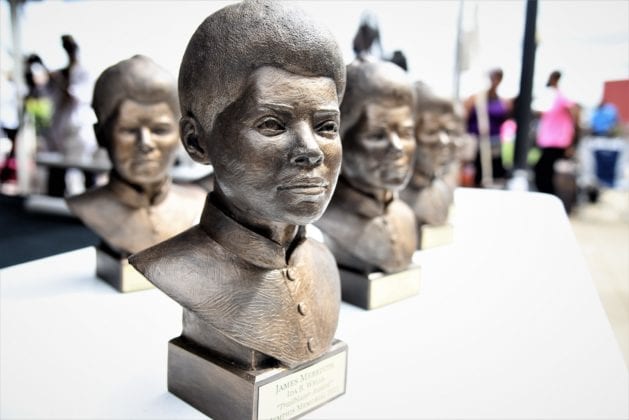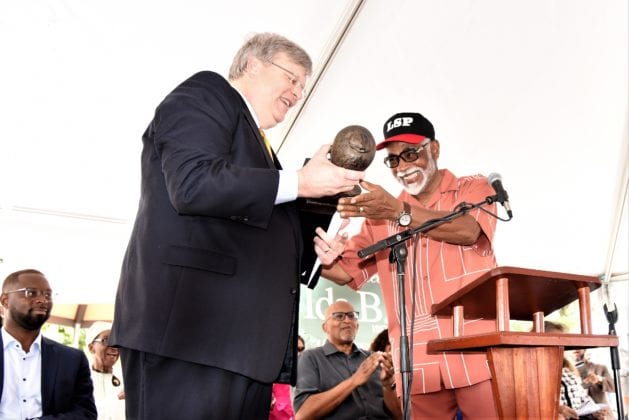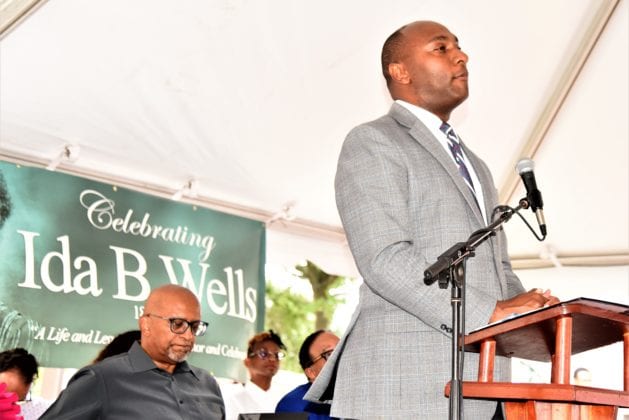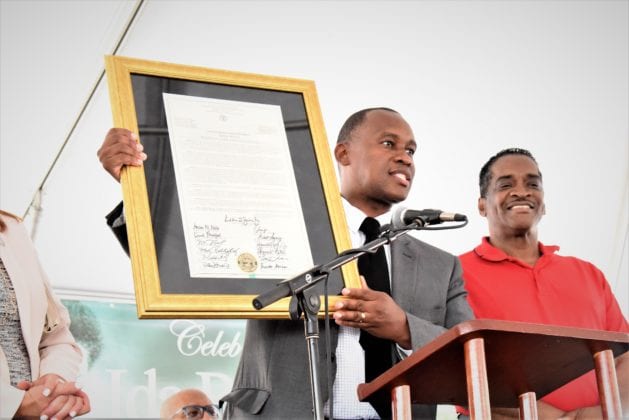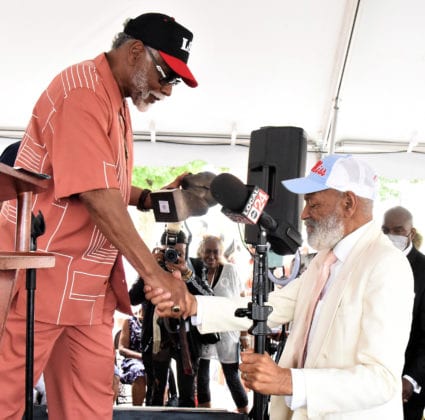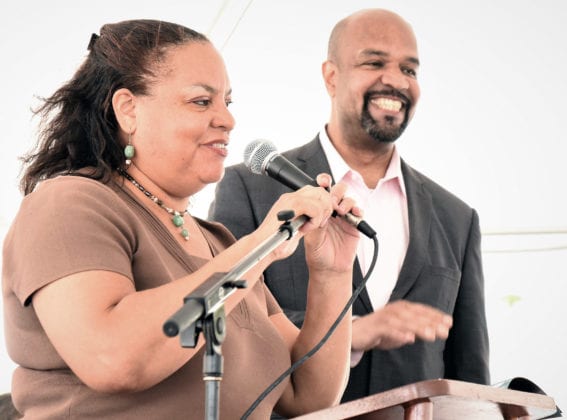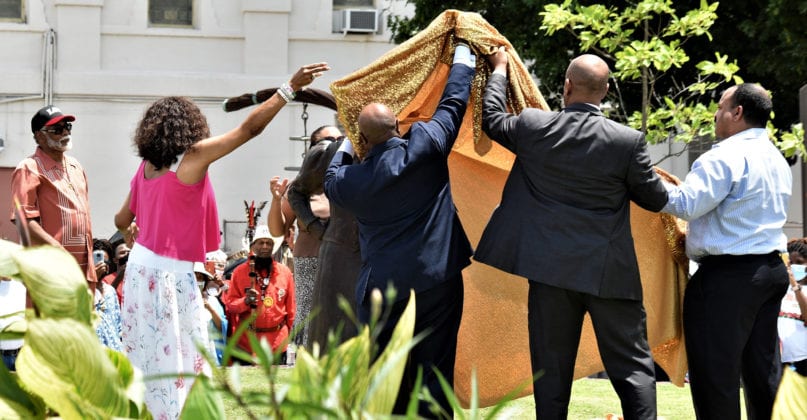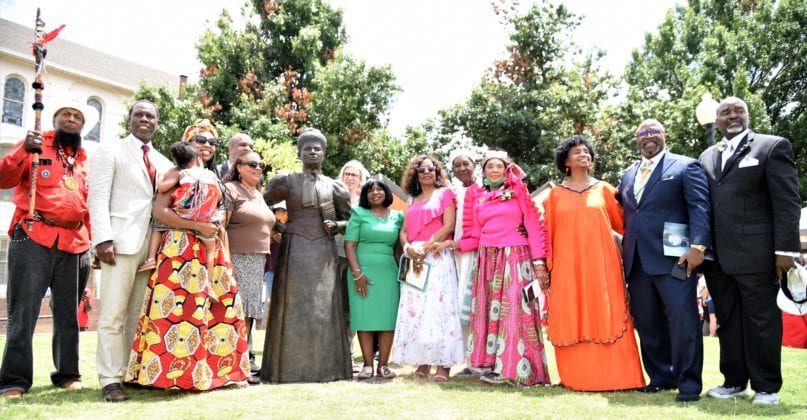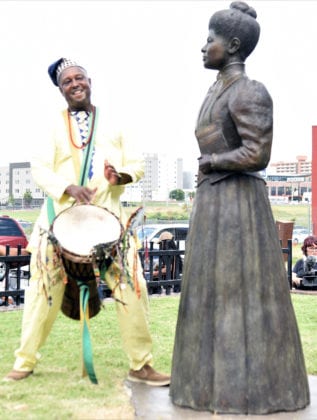History and consciousness go hand in hand, sharing the trait of crossing through time and giving the living the opportunity to embrace them in the course of making progress. Such was the case with the unveiling of a five-foot tall image of Ida B. Wells on Friday.
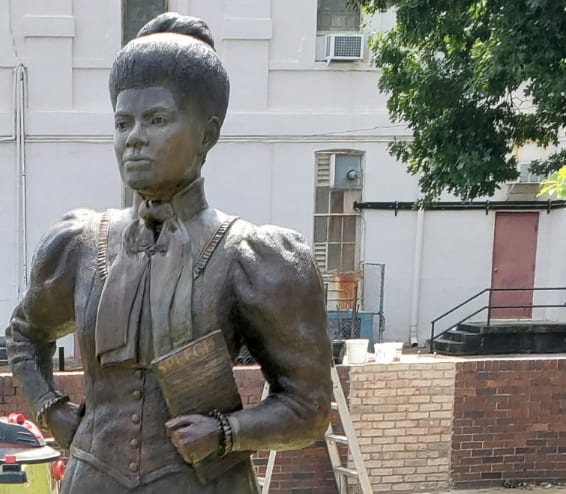
The bronze statue of the anti-lynching champion faces west toward the Mississippi River, looking out from a raised grassy platform that crowns Ida B. Wells Plaza at the corner of Beale Street and Fourth Street.
A sea of people filled the plaza adjacent to Robert Church Park, where they witnessed drapes of glittering gold removed from the sculpture. The image revealed was that of a dignified woman whose death-defying resolve moved the ceremony’s keynote speaker, Dr. Alvin O’Neal Jackson, to construct a message he entitled “What Shall We Do On the Day of Reconstruction?”
The executive director of the Poor People’s Campaign, Jackson brought to life the times she lived in (July 16, 1862 – March 25, 1931), honing in on the 1890s when the crusading journalist/activist documented the lynching of Black people, exposed the deadly lie that it was just punishment reserved for criminals and was forced to leave town by the backlash.
“It was White lash against Black progress and achievement,” said Jackson. “Ida B. Wells was the first to recognize that the cause of this sick, White violence was not sexual, but economic. And for that she was exiled from this city. But here she stands today.”
Jackson called Wells a truth-teller.
“…We, too, can be truth-tellers. We, too, can make a difference,” said Jackson. “…This can be our day of new beginnings. This can be our day of reconstruction.”
Wells’ life, said Jackson, “reminds us that it doesn’t take a whole lot of us to do what needs to be done. God can do a whole lot with just a few, just a remnant, just a handful … the poor can promote new priorities for this nation. And today, I’m fired up and ready to go.”
The ceremony
Onlookers took a collective breath as the statue of Wells – right hand on her hip, left hand gripping a tribute to her “Free Speech” newspaper – was unveiled. The moment capped the effort of the Rev. Dr. L. LaSimba M. Gray Jr. and the Memphis Monument Committee.
There was shouting and clapping and music. African drums had played an expectant drum roll as the drapery was removed. As Gray, Wells’ great-grandchildren, both mayors and others gazed upon the statue, phone cameras and those wielded by professionals captured the moment.
The morning started with a parade down historic Beale Street.
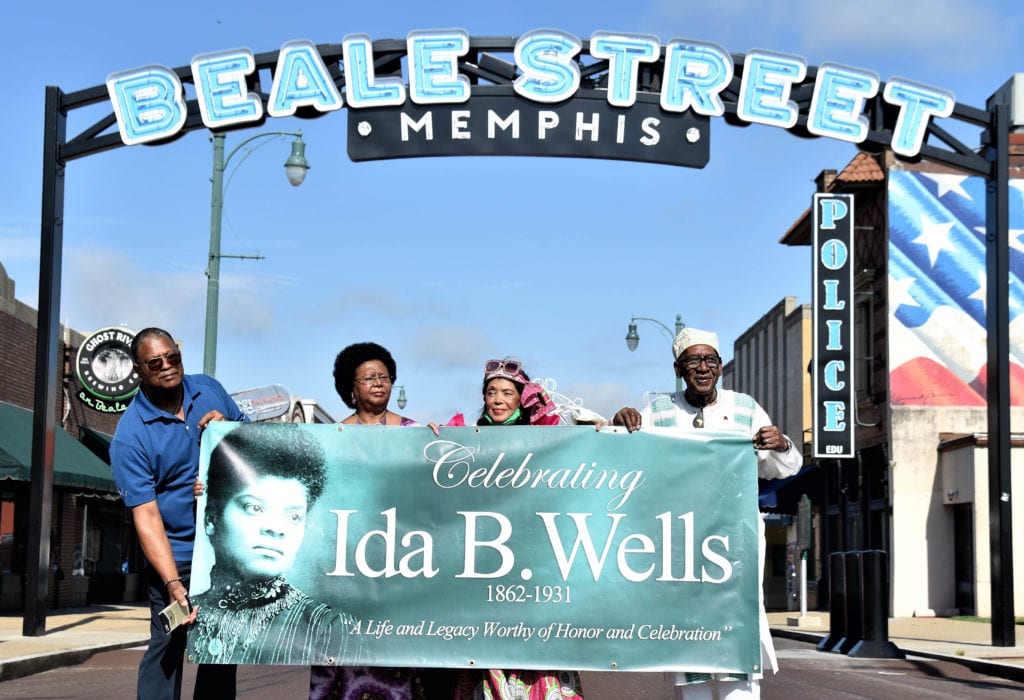
By the time the ceremony set for 11 a.m. began, a crowd had assembled under a tent at the plaza as a band entertained jazz-style. Waves of people poured into the plaza area and into Church Park.
Gray set the order of the day, detailing the program. Africa in April Associate Director Yvonne Acey introduced Lynn Norment, former editor of Ebony Magazine, as the mistress of ceremony.
Everyone stood for the Negro National Anthem, “Lift Ev’ry Voice and Sing” – all three verses. Elected leaders and civil rights organizations followed with tributes, resolutions and words of honor fitting for Ida B. Wells.
Welcoming Wells “back” to Memphis were Mayor Jim Strickland, Shelby County Mayor Lee Harris, U.S. Congressman Steve Cohen, Holly Springs, Mississippi Mayor Sharon Gipson, President and CEO of Memphis Tourism Kevin Kane, State Rep. G.A. Hardaway and Downtown Commission President Paul Young.
Dr. Rychetta Watkins brought Wells to life in her characterization of the honoree. Cequita Monique, accompanied by the poignant, woeful saxophone sounds supplied by Ekpe Abioto, belted out a goosebump-triggering rendition of Billy Holliday’s “Strange Fruit.”
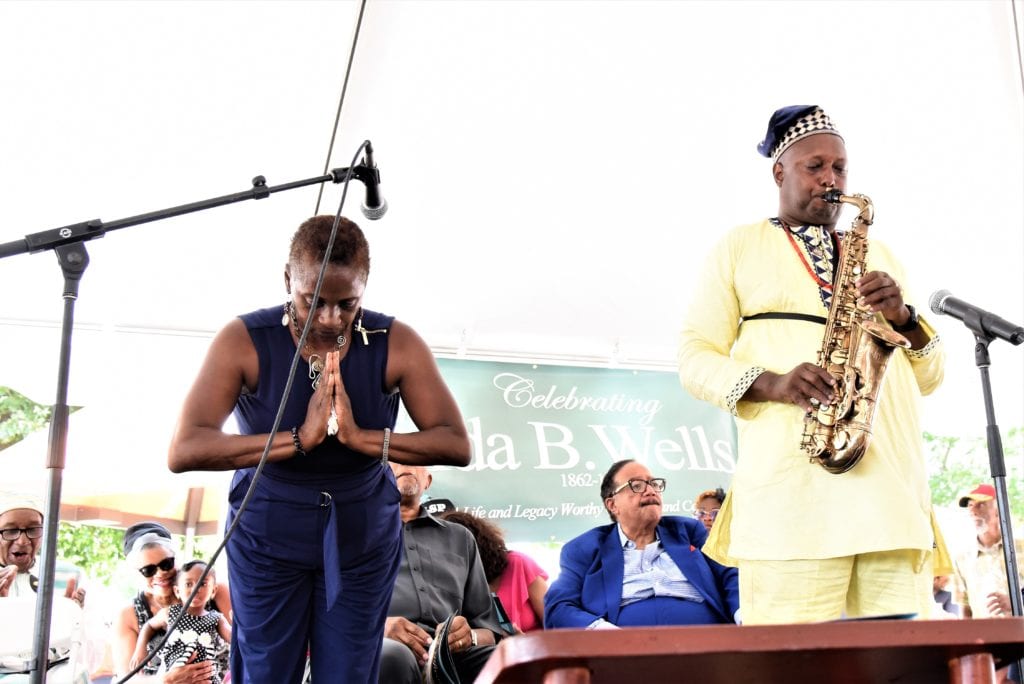
After Jackson’s keynote, Michelle and Daniel Duster, Wells’ great-grandchildren, shared their acknowledgement and thanks in brief remarks. Then they led the crowd from the tent for the unveiling of the statue designed and created by Memphis-area artists Andrea Lugar and her husband, Larry.
With Abioto’s African beats punctuating the joy, some were stirred to impromptu dancing in spirit-filled acknowledgement of Wells’ life, work and legacy.



